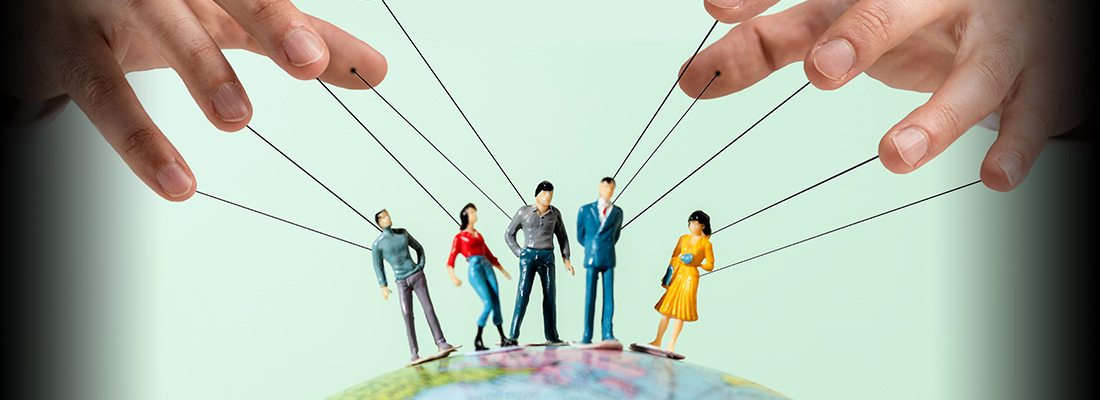

| HOME | NEXT |
Reserving judgement
By Resolve Editor, Deb Eccleston
Whether you’re new to insurance law or a veteran of the industry, there’s a good chance you’ve experienced unconscious bias during your career.
You probably weren’t even aware of it.
Given around 90 percent of the decisions we make every day are automatic and therefore informed by biases and stereotypes, understanding unconscious bias is fundamental to creating a healthy workplace culture.
RM Workplace Solutions consultant and former Queensland Law Society CEO Rolf Moses has dedicated much of his career to fostering cultural change within the legal profession in Queensland and nationally, particularly in the areas of leadership, sexual harassment, workplace conduct, mental health and wellbeing.
According to Rolf, the first step in addressing unconscious bias is acknowledging it exists and can lead to behaviour that is “inappropriate and unintentional”.
“When we make decisions automatically, then those decisions are often informed by biases and stereotypes that we hold – and we all hold biases and stereotypes,” he said.
“It's normal because there's so much information that we need to process, that we tend to categorise people and things into stereotypes – it helps us then make inferences to then make decisions.
“But as a result of doing that, sometimes those biases and stereotypes could exclude other people, or they could marginalise other people or discriminate against other people.”
Understanding brain function
Rolf explained the brain operates in two ways – System 1 and System 2 thinking. System 1 describes that automatic response – fast, frequent and reliant of stereotypes and unconscious thinking.
System 2 is logical, calculating and conscious – requiring more effort – and so is used less often. But System 2 thinking is what’s needed to determine what behaviour is socially appropriate.
Given the complex environment of insurance law, defaulting to System 1 thinking when overloaded with work is an understandable coping mechanism. Which raises the question – do people intentionally set out to exclude others in the workplace?
“My view is that in the large no, people don’t come to work to intentionally harm or exclude others, or discriminate others,” Rolf said.
“But yes, we have high degrees of racial discrimination, discrimination and bullying in our workforces.
“Why do people who behave in these ways do so, and are they aware in fact that they could be excluding others or having an impact on others?”
So how do you know when your decisions are influenced by unconscious bias? Rolf defined the four most common types of bias as:
Confirmation Bias – you selectively search for evidence that backs up an initial observation, overlooking all other information that does not.
Halo or Horns Effect – you focus on a particular positive or negative feature of someone, which taints everything about that individual.
Affinity Bias – preference for people who share qualities with you or someone like you.
In-group/Out-group – an In-group is a group of people that you strongly identify with. The Out-group is not.
“These types of unconscious biases play out in certain situations and can lead to little behaviours, little inequities, comments, remarks that are often are often called micro behaviours,” Rolf said.
“These are little unconscious things we say and do that can make people feel included or valued or can make people feel excluded and unappreciated.”
Small change; big impact
Micro-behaviours fall into two categories – micro-inequities and micro-affirmations.
Micro-inequities are small negative events that are often unintentional and frequently unrecognised by the perpetrator. Rolf said these can build up over time and “become quite disruptive and demoralising”.
Micro-affirmations are the opposite – positive, supportive and uplifting comments that build self esteem and positive work culture.
“When you look at complaints around sexual harassment and bullying and discrimination, often those complaints start with lots of these little acts, micro-inequitable acts, where people have been excluded, they have felt demoralised, all because of very subtle things that keep occurring,” Rolf said.
“There are some things you can do about micro-inequities and that is to not rely on your intuitive decision making, actually stop and think using System 2 thinking in your brain – and the way to do that is to consciously think about using micro-affirmations.”
Five simple micro-affirmations are:
- Nodding
- Smiling
- Using eye contact
- Showing appreciation/recognition
- Remembering people and details.
“These are five very powerful things that we do all the time without thinking, particularly with people you know and are close to,” Rolf said.
“The key is to do that with all your work colleagues.”
Resolve is the official publication of the Australian Insurance Law Association and
the New Zealand Insurance Law Association.

